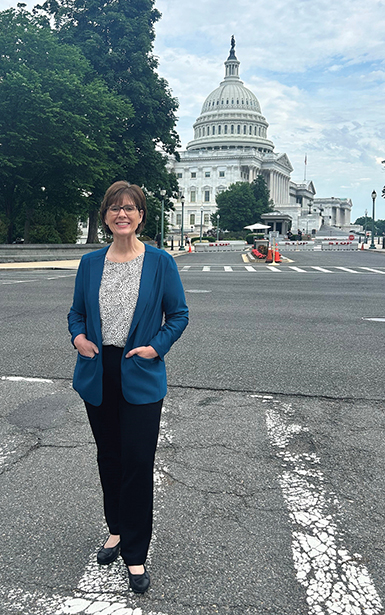
The U.S. House of Representatives Ways and Means Health Subcommittee recently held a hearing to examine the alarming decline of independent medical practices across the United States. The hearing, which featured Christine Kean, chief operating officer at TSAOG Orthopaedics & Spine, highlighted the severe challenges facing private practices and the potential consequences for patient care.
The vanishing independent practice
Over the past few decades, the American healthcare landscape has dramatically shifted. Thirty years ago, most physicians operated independently. Today, only one in three family physicians maintains an independent private practice. This trend toward consolidation has accelerated in recent years, with more than 75 percent of physicians now employed by hospitals, health systems, or corporate entities.
Ms. Kean, representing an independent physician-owned group with a 75-year history, provided firsthand testimony on the financial and regulatory burdens threatening the survival of practices like hers. “Control of the decisions and delivery of healthcare to patients has shifted into the hands of insurance carriers and shareholders of corporations,” Ms. Kean stated, emphasizing the rapid acceleration of this trend since the COVID-19 pandemic.
Financial pressures mounting
Ms. Kean pointed out several challenges facing independent practices, primarily focusing on financial instability. Medicare reimbursement rates, a crucial source of revenue for many providers, have been steadily declining when adjusted for inflation. Ms. Kean provided concrete examples. “In 2021, a typical Medicare patient follow-up visit in our region would pay $89.05. Today, it pays $86.46, a $2.59 decrease from 3 years ago,” she said. This decrease is particularly troubling given the 16 percent inflation rate over the same period.
The rising costs of running a healthcare business further compound the problem. Unlike other businesses that can raise prices to cover increased costs, healthcare providers are often locked into fixed reimbursement rates.
Regulatory burdens, administrative hurdles
Beyond financial pressures, independent practices face a labyrinth of regulatory requirements and administrative tasks that divert time and resources away from patient care. For instance, the Merit-Based Incentive Payment System (MIPS) places a significant burden on providers. Timothy Richardson, MD, a Kansas-based urologist, testified that complying with MIPS consumes half the working day for several key staff members, especially toward the end of the year.
Prior-authorization requirements from insurance companies present another major hurdle. Despite data showing that less than 1 percent of prior-authorization requests are fully denied, practices like Ms. Kean’s spend more than $500,000 annually staffing departments to handle these requests. This process often delays necessary care and frustrates both patients and clinicians.
The uneven playing field
The hearing also shed light on the disparities between independent practices and hospital-owned facilities. Current Medicare regulations allow hospitals to charge more for the same services, creating an unfair competitive advantage. Dr. Richardson explained, “If we sold to a hospital system, overnight, by changing nothing, not changing the sign on the door, not changing the physicians, not changing location, overnight, it would cost two to three times more for any of the insurance companies or Medicare and [for] the patients out-of-pocket as well.”
The disparity in reimbursement rates not only threatens the viability of independent practices but also drives up costs for patients and the healthcare system. Studies have shown that prices at physician practices rise by 14 percent after the practices are purchased by a health system, without corresponding improvements in care quality.
Impact on patient care
The consolidation of medical practices into larger hospital systems has far-reaching implications for patient care. Jennifer Gholson, MD, a physician from Mississippi, emphasized the unique physician-patient relationships fostered in independent practices, particularly in rural areas. She described how practicing in a small town allowed her to conduct home visits and maintain close connections with patients, even after closing her practice. The loss of these personalized relationships and the local accessibility of care can have significant consequences for patient outcomes, especially in underserved communities.
Call for congressional action
Throughout the hearing, witnesses called on Congress to take action to preserve independent medical practices. The most pressing issue, according to many testimonies, is the need for permanent Medicare payment reform. Ms. Kean emphasized this point, stating, “Congress must act to avoid these cuts. We all cheer that it wasn’t as bad as it could have been. It’s as bad as it has ever been, and it needs to be addressed immediately.”
Other suggested reforms included reducing administrative burdens, implementing site-neutral payment policies, and addressing the abuse of utilization management services such as prior authorization.
Looking ahead
The testimony presented at the Ways and Means Health Subcommittee hearing painted a concerning picture for the future of independent medical practices in the United States. As these practices continue to face financial pressures, regulatory burdens, and unfair competition from larger health systems, the healthcare landscape risks further consolidation.
The potential consequences of this trend are significant and include reduced patient choice, higher healthcare costs, and the loss of personalized care that independent practices often provide. As Congress considers potential solutions, the voices of healthcare professionals like Ms. Kean and others who testified will be crucial in shaping policies that can preserve the vital role of independent practices in the U.S. healthcare system.
The challenge now lies in finding a balance that allows these practices to thrive while ensuring high-quality, accessible care for all patients. The outcome of this debate will likely have far-reaching implications for the future of healthcare delivery in the United States.
Catherine Hayes, MPP, is the senior government relations director in the AAOS Office of Government Relations.